Nokia 2012 Annual Report Download - page 42
Download and view the complete annual report
Please find page 42 of the 2012 Nokia annual report below. You can navigate through the pages in the report by either clicking on the pages listed below, or by using the keyword search tool below to find specific information within the annual report.-
 1
1 -
 2
2 -
 3
3 -
 4
4 -
 5
5 -
 6
6 -
 7
7 -
 8
8 -
 9
9 -
 10
10 -
 11
11 -
 12
12 -
 13
13 -
 14
14 -
 15
15 -
 16
16 -
 17
17 -
 18
18 -
 19
19 -
 20
20 -
 21
21 -
 22
22 -
 23
23 -
 24
24 -
 25
25 -
 26
26 -
 27
27 -
 28
28 -
 29
29 -
 30
30 -
 31
31 -
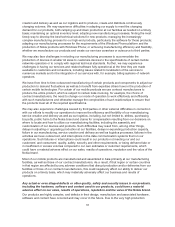 32
32 -
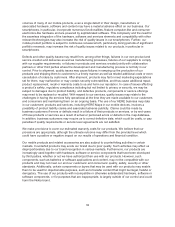 33
33 -
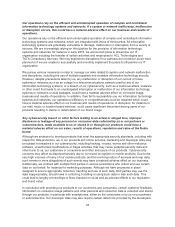 34
34 -
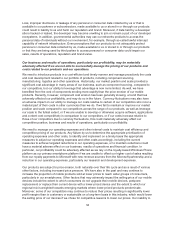 35
35 -
 36
36 -
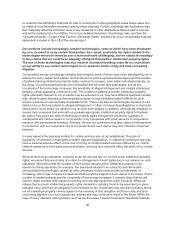 37
37 -
 38
38 -
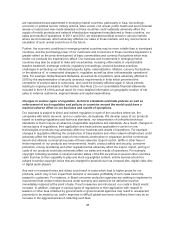 39
39 -
 40
40 -
 41
41 -
 42
42 -
 43
43 -
 44
44 -
 45
45 -
 46
46 -
 47
47 -
 48
48 -
 49
49 -
 50
50 -
 51
51 -
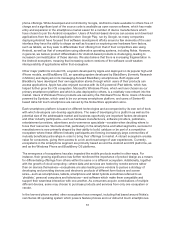 52
52 -
 53
53 -
 54
54 -
 55
55 -
 56
56 -
 57
57 -
 58
58 -
 59
59 -
 60
60 -
 61
61 -
 62
62 -
 63
63 -
 64
64 -
 65
65 -
 66
66 -
 67
67 -
 68
68 -
 69
69 -
 70
70 -
 71
71 -
 72
72 -
 73
73 -
 74
74 -
 75
75 -
 76
76 -
 77
77 -
 78
78 -
 79
79 -
 80
80 -
 81
81 -
 82
82 -
 83
83 -
 84
84 -
 85
85 -
 86
86 -
 87
87 -
 88
88 -
 89
89 -
 90
90 -
 91
91 -
 92
92 -
 93
93 -
 94
94 -
 95
95 -
 96
96 -
 97
97 -
 98
98 -
 99
99 -
 100
100 -
 101
101 -
 102
102 -
 103
103 -
 104
104 -
 105
105 -
 106
106 -
 107
107 -
 108
108 -
 109
109 -
 110
110 -
 111
111 -
 112
112 -
 113
113 -
 114
114 -
 115
115 -
 116
116 -
 117
117 -
 118
118 -
 119
119 -
 120
120 -
 121
121 -
 122
122 -
 123
123 -
 124
124 -
 125
125 -
 126
126 -
 127
127 -
 128
128 -
 129
129 -
 130
130 -
 131
131 -
 132
132 -
 133
133 -
 134
134 -
 135
135 -
 136
136 -
 137
137 -
 138
138 -
 139
139 -
 140
140 -
 141
141 -
 142
142 -
 143
143 -
 144
144 -
 145
145 -
 146
146 -
 147
147 -
 148
148 -
 149
149 -
 150
150 -
 151
151 -
 152
152 -
 153
153 -
 154
154 -
 155
155 -
 156
156 -
 157
157 -
 158
158 -
 159
159 -
 160
160 -
 161
161 -
 162
162 -
 163
163 -
 164
164 -
 165
165 -
 166
166 -
 167
167 -
 168
168 -
 169
169 -
 170
170 -
 171
171 -
 172
172 -
 173
173 -
 174
174 -
 175
175 -
 176
176 -
 177
177 -
 178
178 -
 179
179 -
 180
180 -
 181
181 -
 182
182 -
 183
183 -
 184
184 -
 185
185 -
 186
186 -
 187
187 -
 188
188 -
 189
189 -
 190
190 -
 191
191 -
 192
192 -
 193
193 -
 194
194 -
 195
195 -
 196
196 -
 197
197 -
 198
198 -
 199
199 -
 200
200 -
 201
201 -
 202
202 -
 203
203 -
 204
204 -
 205
205 -
 206
206 -
 207
207 -
 208
208 -
 209
209 -
 210
210 -
 211
211 -
 212
212 -
 213
213 -
 214
214 -
 215
215 -
 216
216 -
 217
217 -
 218
218 -
 219
219 -
 220
220 -
 221
221 -
 222
222 -
 223
223 -
 224
224 -
 225
225 -
 226
226 -
 227
227 -
 228
228 -
 229
229 -
 230
230 -
 231
231 -
 232
232 -
 233
233 -
 234
234 -
 235
235 -
 236
236 -
 237
237 -
 238
238 -
 239
239 -
 240
240 -
 241
241 -
 242
242 -
 243
243 -
 244
244 -
 245
245 -
 246
246 -
 247
247 -
 248
248 -
 249
249 -
 250
250 -
 251
251 -
 252
252 -
 253
253 -
 254
254 -
 255
255 -
 256
256 -
 257
257 -
 258
258 -
 259
259 -
 260
260 -
 261
261 -
 262
262 -
 263
263 -
 264
264 -
 265
265 -
 266
266 -
 267
267 -
 268
268 -
 269
269 -
 270
270 -
 271
271 -
 272
272 -
 273
273 -
 274
274 -
 275
275 -
 276
276 -
 277
277 -
 278
278 -
 279
279 -
 280
280 -
 281
281 -
 282
282 -
 283
283 -
 284
284
 |
 |
unfavorable variations in its product and service mix towards lower margin products or services, this
could have a material adverse effect on our business, results of operations, particularly profitability,
and financial condition.
Nokia Siemens Networks’ strategy to focus on mobile broadband infrastructure and services is subject
to risks and uncertainties, including:
• Nokia Siemens Networks’ ability to adapt its policies and procedures to the additional
emphasis on a services business model.
• Nokia Siemens Networks’ ability to recruit and retain skilled personnel.
• Nokia Siemens Networks’ ability to successfully develop market recognition of its business as
a leading provider of software and service support in the mobile broadband infrastructure
industry.
• Nokia Siemens Networks’ ability to maintain efficient and low-cost operations.
• Delays in implementing relevant initiatives.
• Further consolidation of its customers.
• Increased competition.
• If Nokia Siemens Networks’ fails to implement its strategy successfully, its market share may
decline which could result in the loss of scale benefits and reduce competitiveness and its
financial performance may deteriorate.
• The market may develop in directions that leave Nokia Siemens Networks deficient in certain
technologies and industry areas that impact its overall competitiveness.
• Certain customers who currently buy services and products from Nokia Siemens Networks
that are not regarded as core may choose to turn to alternative vendors to maintain end-to-
end service from their suppliers.
• The development and implementation of Nokia Siemens Networks’ strategy has consumed
and will continue to consume significant time, attention and resources of its management.
Competition in the mobile broadband infrastructure and related services market is intense.
Nokia Siemens Networks’ may be unable to maintain or improve its market position or respond
successfully to changes in the competitive environment.
The competitive environment in the mobile broadband infrastructure and related services market
continues to be intense and is characterized by equipment price erosion, a maturing of industry
technology and intense price competition. Moreover, mobile operators’ cost reductions are reducing
the amount of available business resulting in increased competition and pressure on pricing and
profitability. Overall, participants in this market compete with each other on the basis of product
offerings, technical capabilities, quality, service and price.
Nokia Siemens Networks competes with companies that have larger scale and historically higher
margins affording such companies more flexibility on pricing, as well as companies that may have
stronger customer finance possibilities due to internal policies or governmental support, for example in
the form of trade guarantees, allowing them to offer products and services at very low prices or with
attractive financing terms. Nokia Siemens Networks also faces increasing competition from competitors
from China, which endeavor to gain market share for instance by leveraging their low-cost advantage
in tenders for customer contracts. Competition for new communication service provider customers as
well as for new infrastructure deployments is particularly intense and focused on price. In addition, new
41
